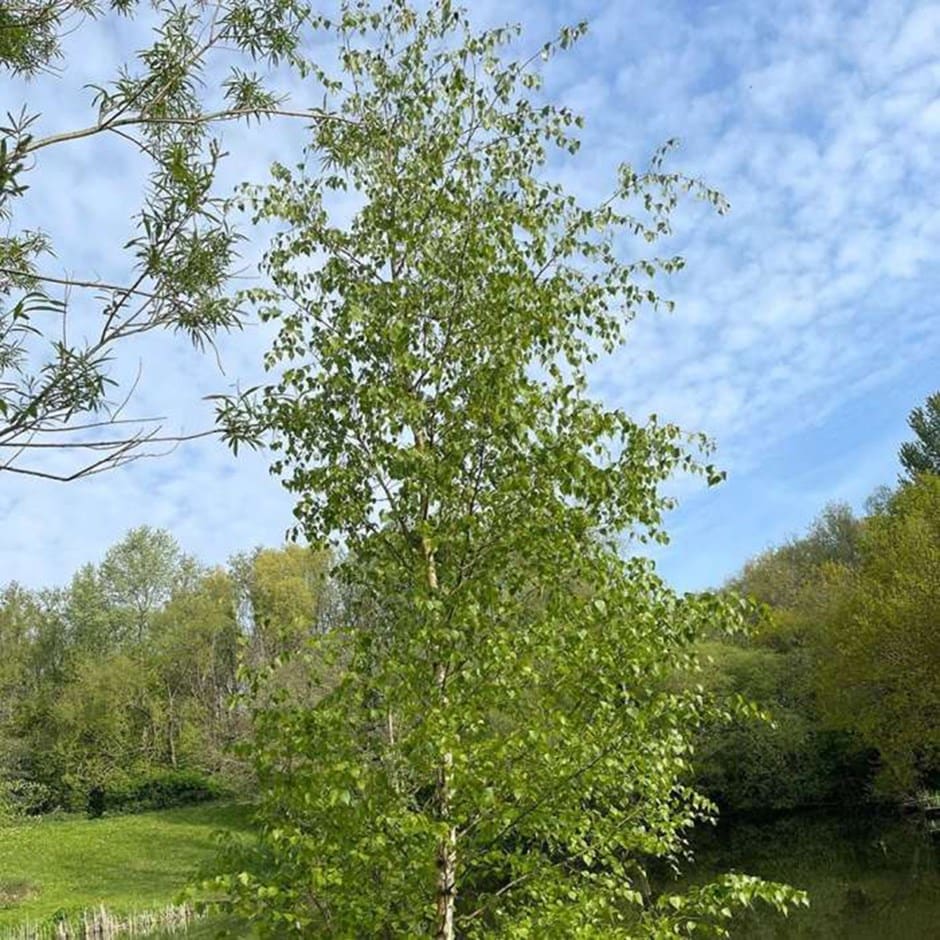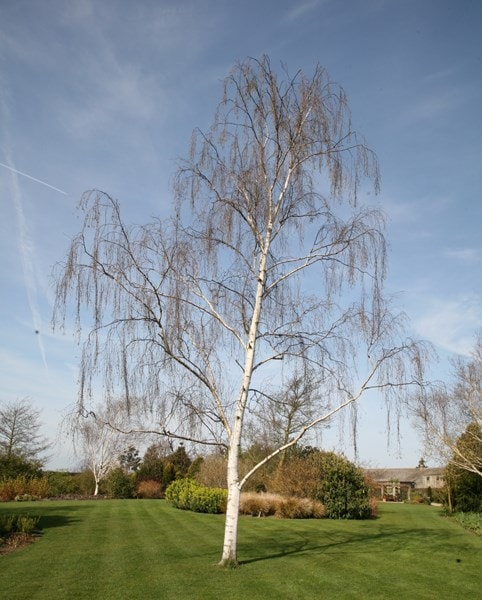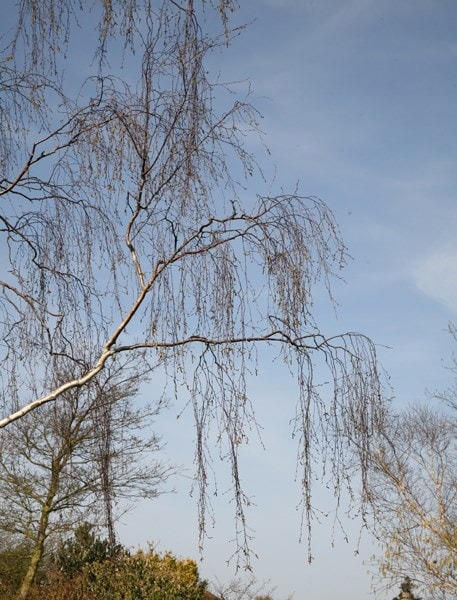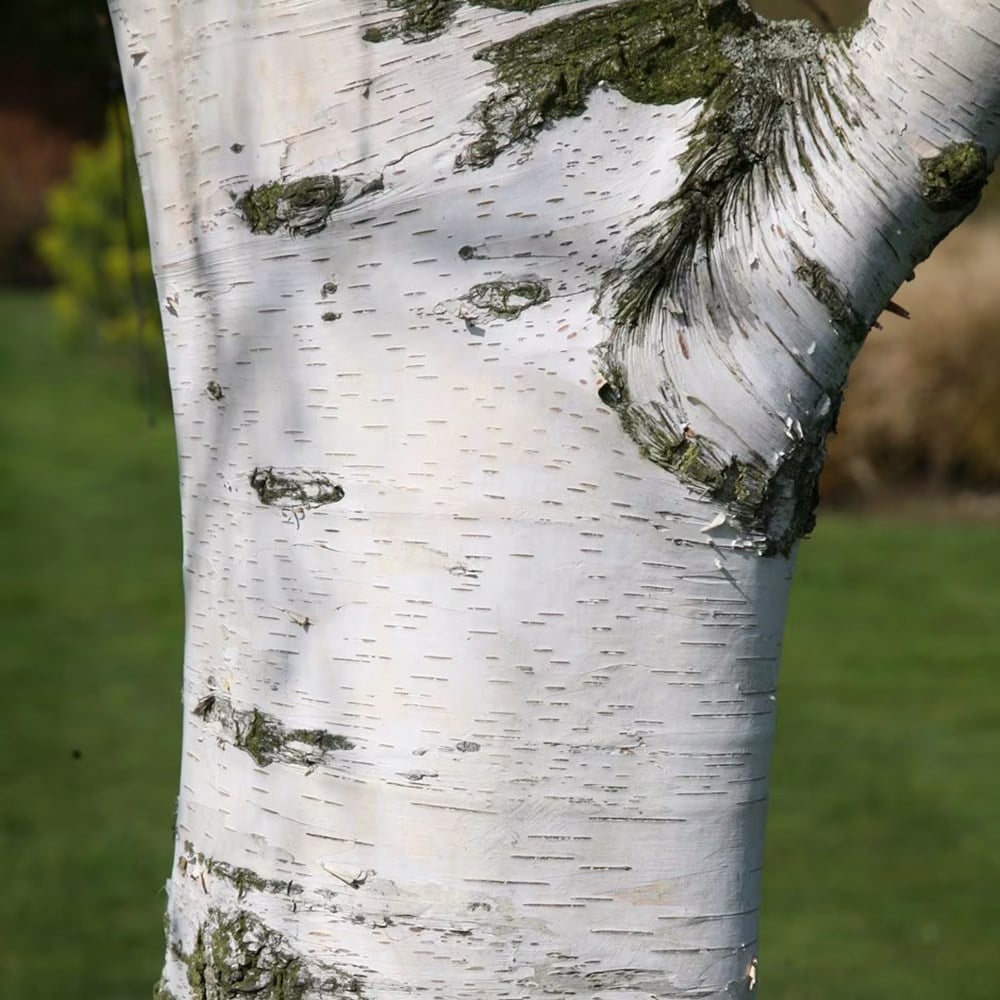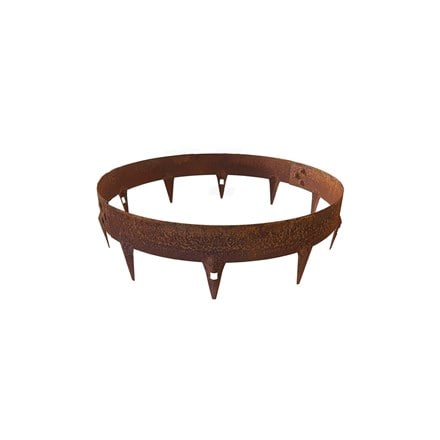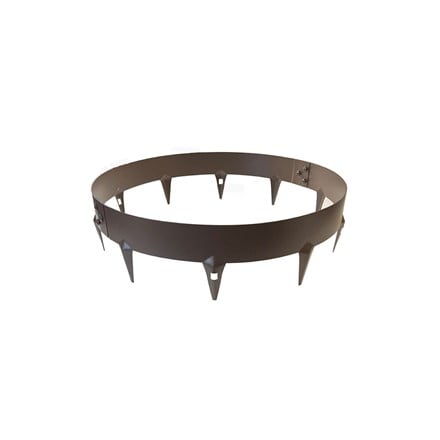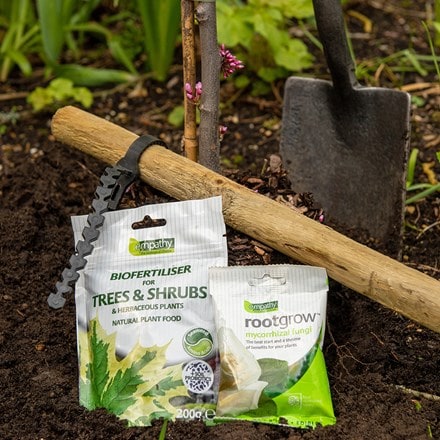Betula pendula
silver birch ( syn. Betula alba )
- 2 litre pot
- £24.99
- In stock (shipped within 3-5 working days)
- 9 litre pot | 1.2 - 1.5m tall
- £59.99
- available to order from summer
- 12 litre pot | 1.6m tall
- £119.99
- available to order from summer
- bare root | 1.2m tall
- £32.99
- available to order from autumn
- 3 × bare root | 60 - 80cm tall | Hedging
- £19.98 £6.66 each
- available to order from autumn
- bare root | 60 - 80cm tall | hedging
- £9.99
- available to order from autumn
Delivery options
- Standard £5.99
- Position: full sun or lightly dappled shade
- Soil: moderately fertile, moist but well-drained soil
- Rate of growth: fast
- Flowering period: March
- Hardiness: fully hardy
Diamond-shaped, bright green leaves hang from graceful, pendant branches. Betula pendula is a fast-growing tree with white, peeling bark that becomes marked with black, rugged cracks as it gets older.
In spring, yellow-brown male catkins appear and in late autumn the foliage turns yellow before falling. It is one of the most widely used birches, grown for its narrow, conical shape and ability to grow in almost all soils and situations. The white bark, develops fully when the tree is around 8 years old.
All the birches we supply are single-stemmed unless stated, but they can be planted close together to creat a multi-stemmed effect.
In spring, yellow-brown male catkins appear and in late autumn the foliage turns yellow before falling. It is one of the most widely used birches, grown for its narrow, conical shape and ability to grow in almost all soils and situations. The white bark, develops fully when the tree is around 8 years old.
All the birches we supply are single-stemmed unless stated, but they can be planted close together to creat a multi-stemmed effect.
When planting, add some soil conditioner (well-rotted compost) to the planting hole and some mycorrhizal fungi to aid root establishment.
Ensure the top of the plant's compost is flush with the level of the surrounding soil and the collar of the tree is above ground level.
Support taller specimens either with a bamboo cane and or stake during establishment. Water generously around the base of the plant.
Birches need little pruning, but you may want to remove any diseased or crossing branches. It is essential that any pruning work is carried out between late summer to mid winter as the sap will 'bleed' heavily at other times.
Ensure the top of the plant's compost is flush with the level of the surrounding soil and the collar of the tree is above ground level.
Support taller specimens either with a bamboo cane and or stake during establishment. Water generously around the base of the plant.
Birches need little pruning, but you may want to remove any diseased or crossing branches. It is essential that any pruning work is carried out between late summer to mid winter as the sap will 'bleed' heavily at other times.
Goes well with
Powder coated steel tree ring edging - brown
600mm
£27.99
In stock (shipped within 2-3 working days)
Premium tree planting kit with softwood stake
kit with with softwood stake
£20.95
In stock (shipped within 2-3 working days)
